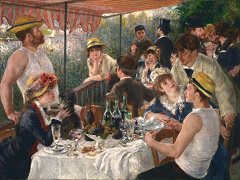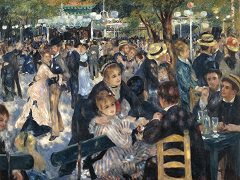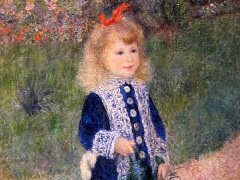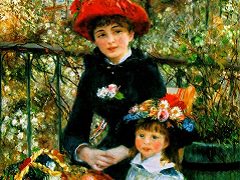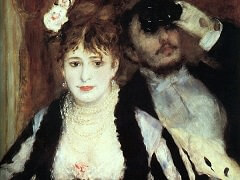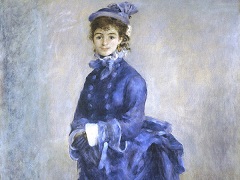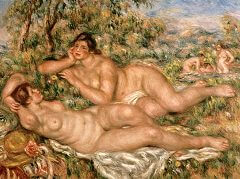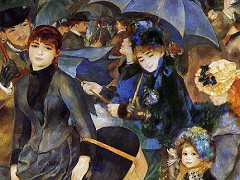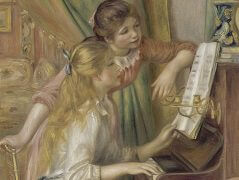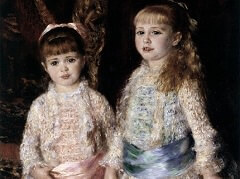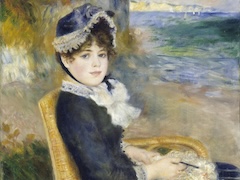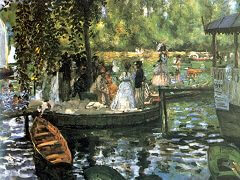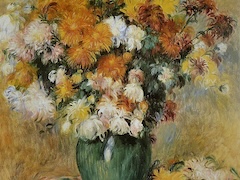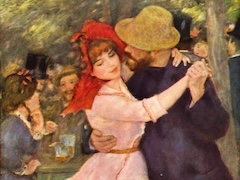Acrobats at the Cirque Fernando - by Pierre-Auguste Renoir
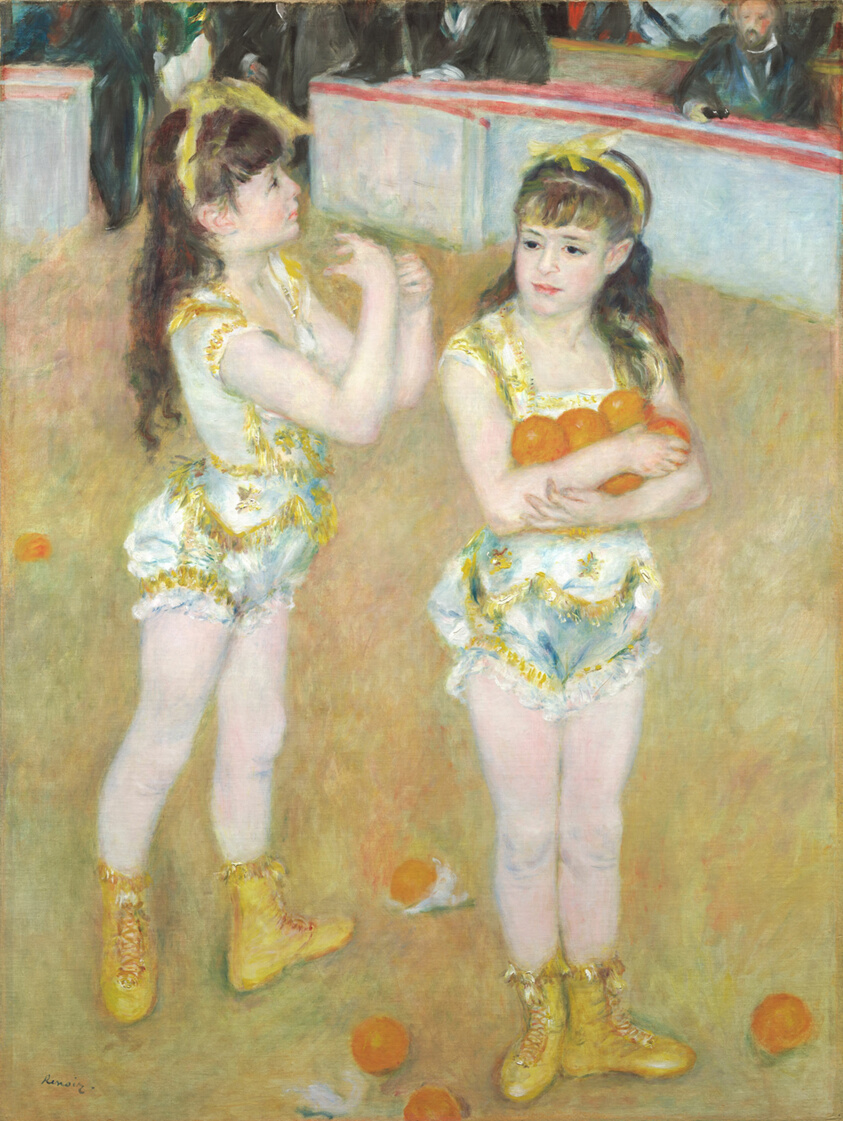
In works such as Acrobats at the Cirque Fernando, Pierre Auguste Renoir signaled his interest in the themes of urban leisure favored by fellow Impressionists such as Edgar Degas. The Cirque Fernando, which opened in Montmartre in June 1875, was a venue that attracted enthusiastic crowds, including many artists. Here, Renoir depicted Francisca and Angelina Wartenberg, members of an itinerant German acrobatic troupe, gracefully taking their bows and gathering the tissue-wrapped oranges that appreciative audience members have tossed into the ring.
The circus was a popular and egalitarian form of entertainment, especially in Europe, with a centuries-long history. Circus has been a popular subject matter for many avant-garde artists in the early 20th century. Among those artists, Georges Seurat painted The Circus, and Picasso created Saltimbanques.
Although Renoir's brother, an art critic, described this work as "a faithful painting of modern life," in fact the artist adjusted and transformed the reality of the Cirque Fernando in several ways. He portrayed Francisca and Angelina Wartenberg as being much younger than their actual respective ages of fourteen and seventeen. Moreover, he had them pose in his studio, where he could paint them in natural light, which he found to be more flattering than the gaslight of the circus. Renoir created a visual harmony by building up forms with thin washes of paint, using delicate, multidirectional brushwork. His highly arbitrary color scheme emphasizes this, with the yellows and oranges of the circus floor appearing in the girls' costumes, as well as in the delicate reflections of their skin tones. Situating the black-clad male spectators along the top of the sunny scene, Renoir scarcely hinted at their potential role as patrons of female circus performers such as the Wartenbergs. His vision of modern life sought only its poetry, not its unsavory side, and Acrobats at the Cirque Fernando appears no less fresh and spontaneous for having been carefully constructed.

